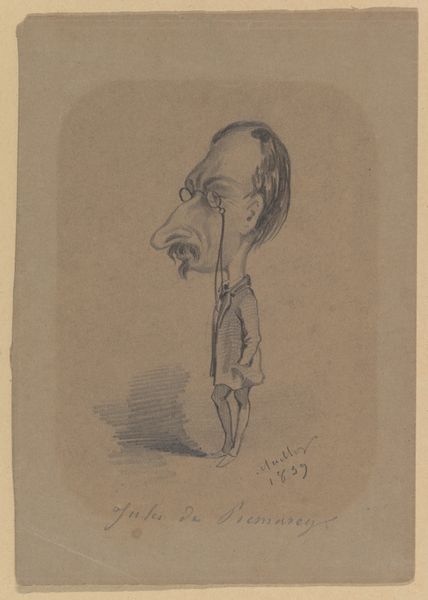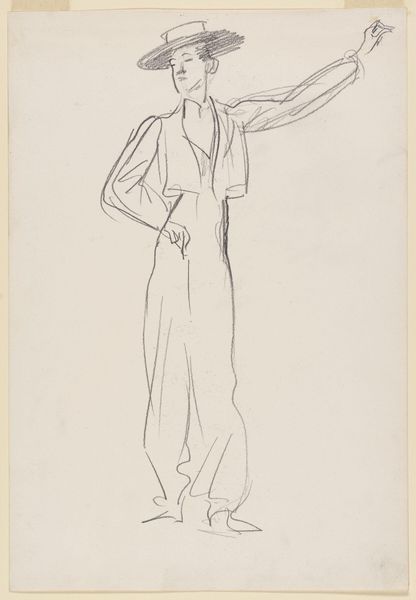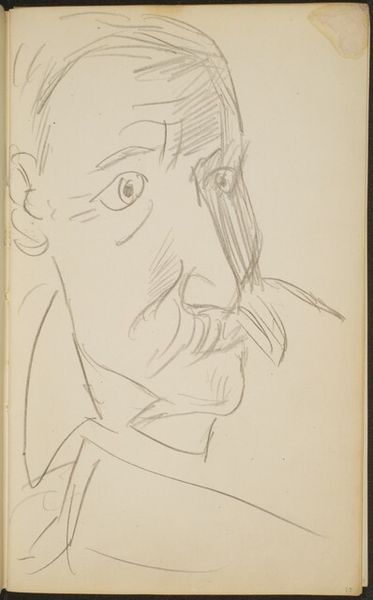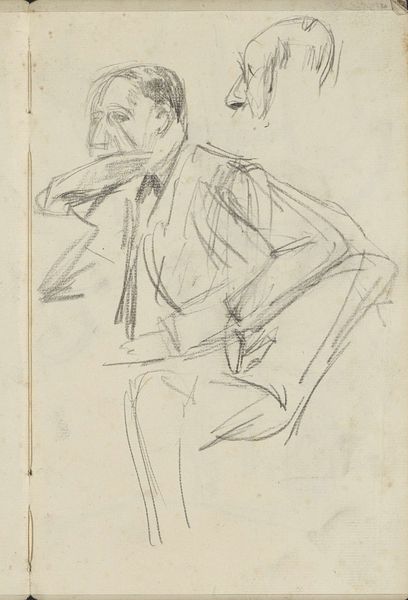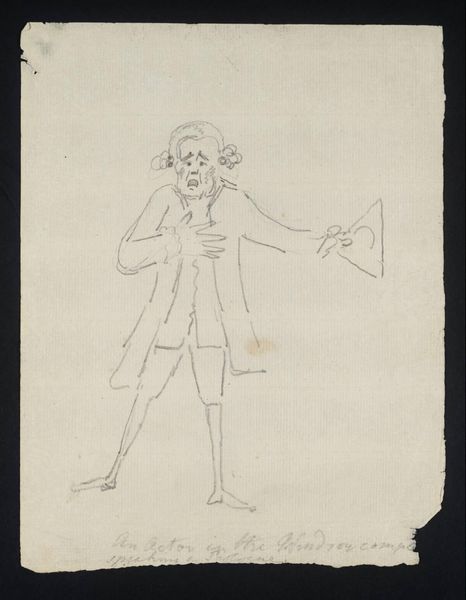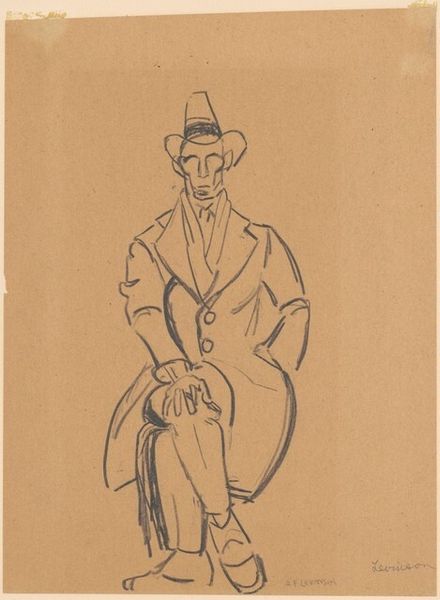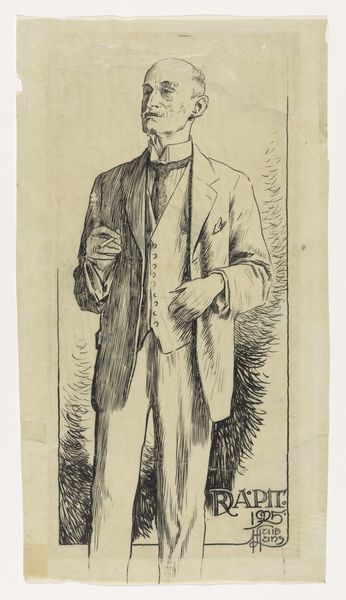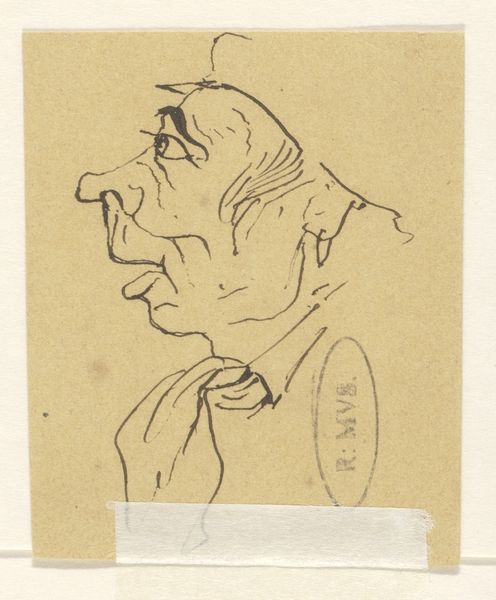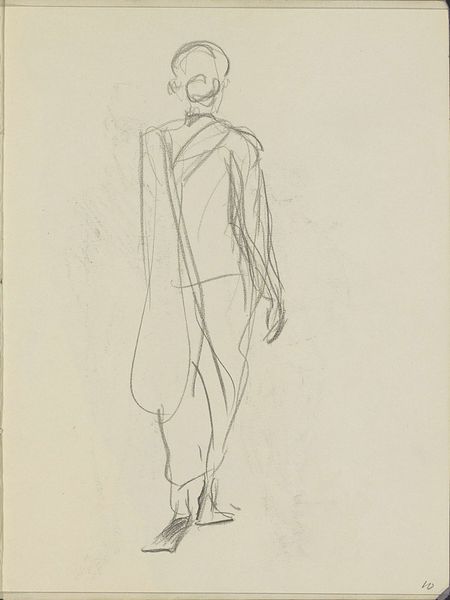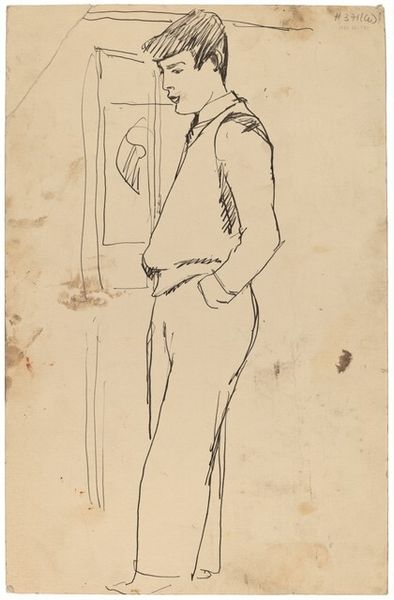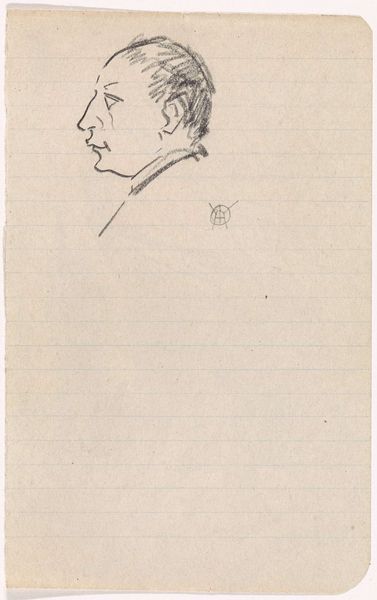
drawing, pencil
#
portrait
#
drawing
#
amateur sketch
#
light pencil work
#
impressionism
#
caricature
#
pencil sketch
#
personal sketchbook
#
idea generation sketch
#
ink drawing experimentation
#
pen-ink sketch
#
pencil
#
sketchbook drawing
#
pencil work
#
academic-art
#
sketchbook art
#
realism
Dimensions: height 135 mm, width 57 mm
Copyright: Rijks Museum: Open Domain
Editor: This is a pencil sketch from 1887 by Johan Michaël Schmidt Crans, titled "Schets voor karikatuur van kamerlid L.W.C. Keuchenius", which roughly translates to 'Sketch for caricature of parliament member L.W.C. Keuchenius.' I’m immediately struck by the looseness of the lines and how that contributes to the overall satirical mood. What can you tell me about this piece? Curator: This sketch exemplifies the material conditions of caricature and its role in social commentary. Consider the medium itself: pencil, readily available, inexpensive, easily reproduced. This lends itself to quick creation and dissemination, key for timely political critique. How might the choice of pencil over, say, oil paint, influence the accessibility and impact of the caricature's message? Editor: I hadn't thought about it that way! It makes perfect sense. The very act of creating a quick pencil sketch, something reproducible and shareable, democratizes the art form. I guess I was too focused on the subject and the implied political commentary. Curator: Exactly. Furthermore, explore the production of images like these during that time period. Were they circulated in newspapers? Broadsides? Think about the relationship between artistic labor, print culture, and the consumption of political satire. Who was the intended audience and how did the material nature of the sketch contribute to reaching them? Editor: I see... so, the materiality is crucial for understanding its societal role back then. And today, that rough quality almost humanizes the subject, paradoxically adding a layer to its social criticism. Curator: Precisely! The means of production shaped its consumption and the accessibility of its social commentary. Considering that the artistic choice emphasizes dissemination and not permanence, it shifts the traditional understanding of art objects. Editor: I always focused on interpreting the caricature's subject, not the material implications. That definitely changed my perspective. Thank you! Curator: Likewise. Looking at the production and dissemination of art truly unveils so much about a society and its values.
Comments
No comments
Be the first to comment and join the conversation on the ultimate creative platform.
